
When Alienware rolled out the world's first OLED gaming monitor, the Alienware 34 AW3423DW, we were wowed. Now there's a new model, the Alienware 34 AW3423DWF, that addresses some of the slight reservations we had. Does that added "F" on the end make for a better monitor?
For sure, Alienware has fixed a few things. As good as the old Alienware 34 AW3423DW was, it was painfully pricey for starters. Partly, that was down to full Nvidia G-Sync Ultimate certification, a feature that doesn't necessarily add a huge amount to the viewing experience, but costs plenty thanks to the need to integrate an Nvidia G-Sync chip into the display.
The original non-F model also had a matte anti-glare screen coating that slightly compromises the vibrancy and perceived black levels of the 34-inch QD-OLED panel. The good news is that Alienware has tweaked the first issue and entirely fixed the second.
The new Alienware 34 AW3423DWF is a fair bit cheaper than the original model, which we deem one of the very best gaming monitors going. At $1,099 / £929, you're paying $200 less here. One aspect that hasn't changed is the native resolution. It remains at 3,440 by 1,440 pixels. That's a good compromise for pure gaming, less so if you're looking for a display to both game and get some general computing work done.
Design and Features
The new Alienware 34 AW3423DWF is built around exactly the same Samsung-supplied QD-OLED panel as the original model. In most regards, the specs are identical. But there are a few detail changes.
Along with the change from matte to glossy panel coating, the most obvious change is the drop in refresh rate from 175Hz to 165Hz. That's a tiny difference in experiential terms and one that's probably more about justifying the older model's price premium than any technical limitations. You're never going to be able to feel the difference between 165Hz and 175Hz in-game, that's for sure.
Regardless, the aforementioned deletion of G-Sync Ultimate support isn't a total drawback. Tagging in is AMD's Freesync Premium Pro as an alternative, making it ideal if you're looking for the best G-Sync compatible FreeSync monitors. So there's adaptive refresh support for not only AMD and Nvidia GPUs but also the latest Sony and Microsoft consoles.

Just remember that the 3,440 by 1,440 ultrawide resolution and 21:9 aspect ratio can be problematic for console gaming. As a screen to share between console and PC gaming, this monitor can make sense. But for pure console gaming, it's too compromised.
The physical design is familiar, too. Essentially, this cheaper model trades some of the original's white plastics for black. It's still a good-looking monitor, but a little of the premium "Stormtrooper" style has been lost in the process.
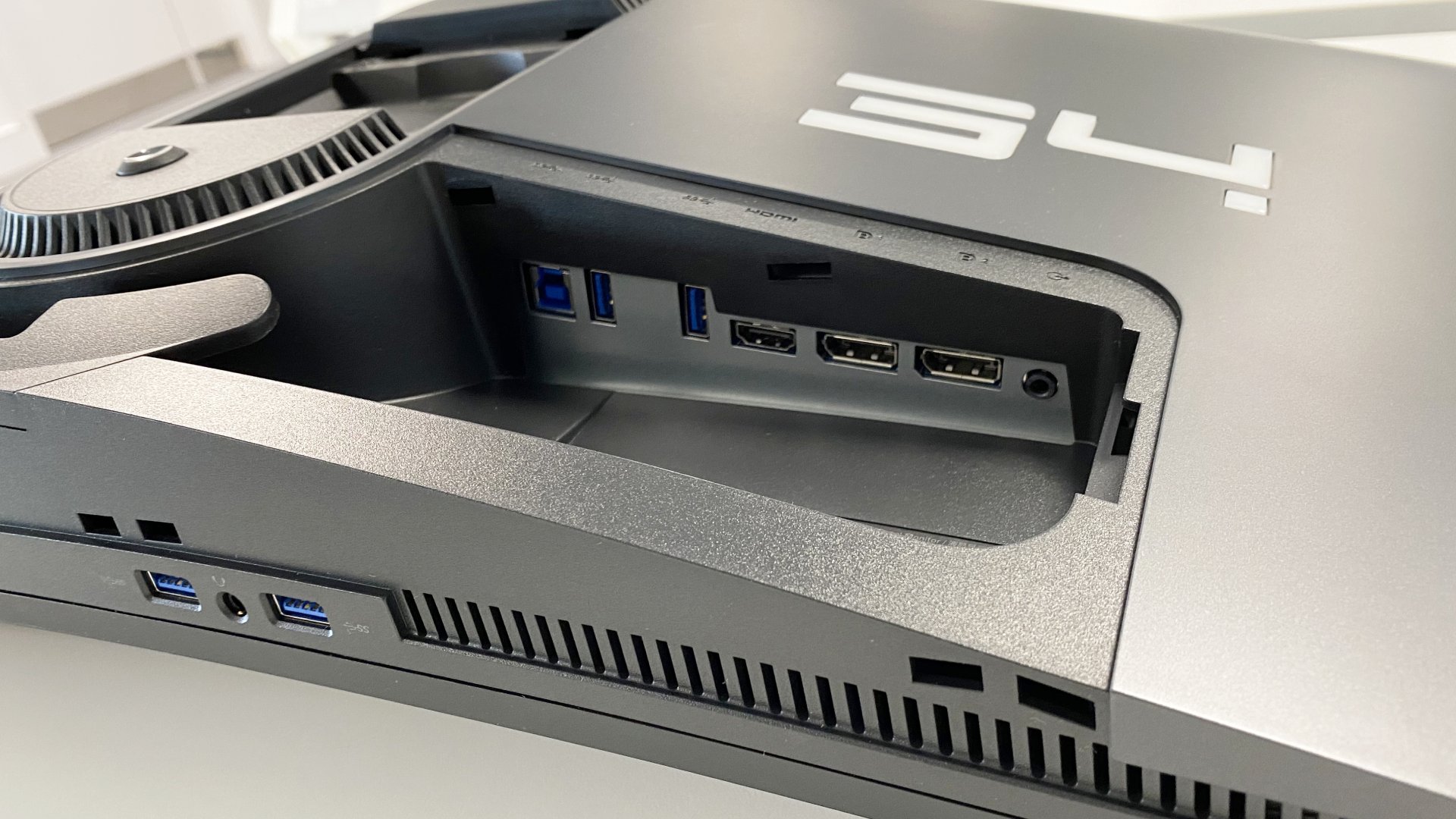
Connectivity-wise, you get a pair of DisplayPort 1.4 interfaces and a single HDMI 2.1, the latter ensuring you can hit 120Hz for console gaming, with the 165Hz action limited to PCs. There's no USB-C connectivity, which isn't a major issue for gaming but does limit this monitor's multi-purpose appeal a little. Rounding out the main speeds and feeds is a USB hub, a height, tilt and swivel adjustable stand, and a dash of Alienware's FX RGB lighting tackle.

Performance
Given the original Alienware 34 AW3423DW is a corker, you'd expect the new AW3423DWF to be a stunner, too. And you'd be right. You get all the same OLED goodness as before.
First up, that means ultra-quick pixel response that's more than worthy of a place on our best high refresh rate monitor power rankings. OK, LCD monitors have gotten a lot quicker in recent years. But they still can't compete with the blur-free experience that OLED panel tech delivers. It's pretty special.
The same applies to HDR performance. OLED panels effectively offer a perfect per-pixel lighting experience. Again, even the greatest LCD monitors with mini-LED local dimming are nowhere near as precise.
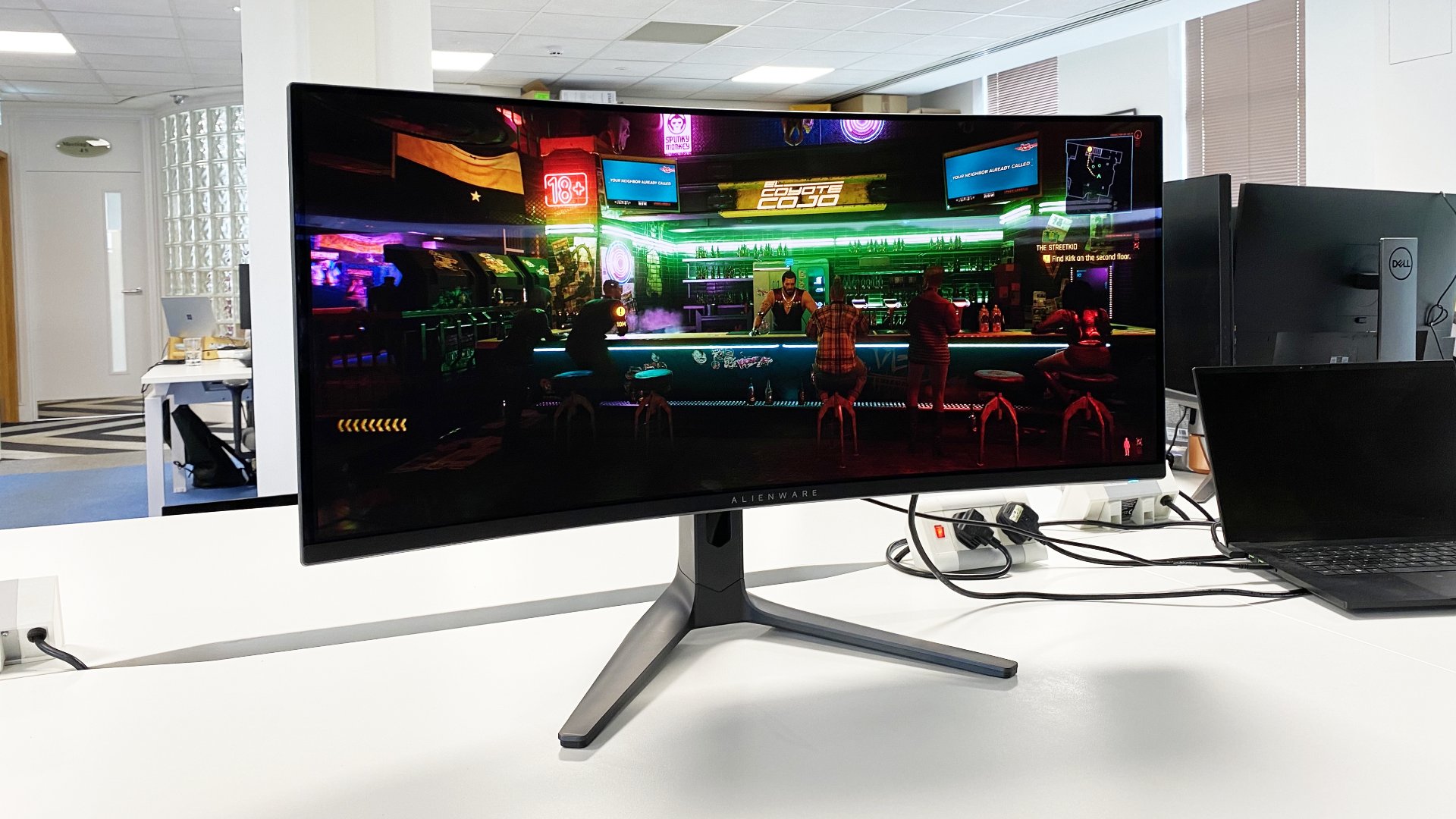
If anything, however, the HDR experience is even better now thanks to a new glossy screen coating. It ramps up the perceived contrast and lets the QD-OLED panel really sing.
Seeing something like Cyberpunk 2077 running with both HDR and ray-tracing set to full reheat on this monitor is pretty much the definitive gaming experience right now, at least in terms of pure visual spectacle. It's really something, the contrast is just outrageous.
The 21:9 ultrawide aspect ratio and gentle 1800R panel curve help a little, too. It's definitely a more immersive form factor than a conventional 16:9 screen. The combination of relatively modest resolution and 165Hz refresh doesn't hurt, either.
Sure, you're not getting quite the same razor-sharp in-game image detail as you do with, say, one of the best 4K monitors for gaming. But then with this slightly lower resolution, you've got half a chance of hitting those buttery-smooth triple-digit frame rates. Even with the latest GPUs, 4K really slows things down in the latest games with all the eye candy switched on.
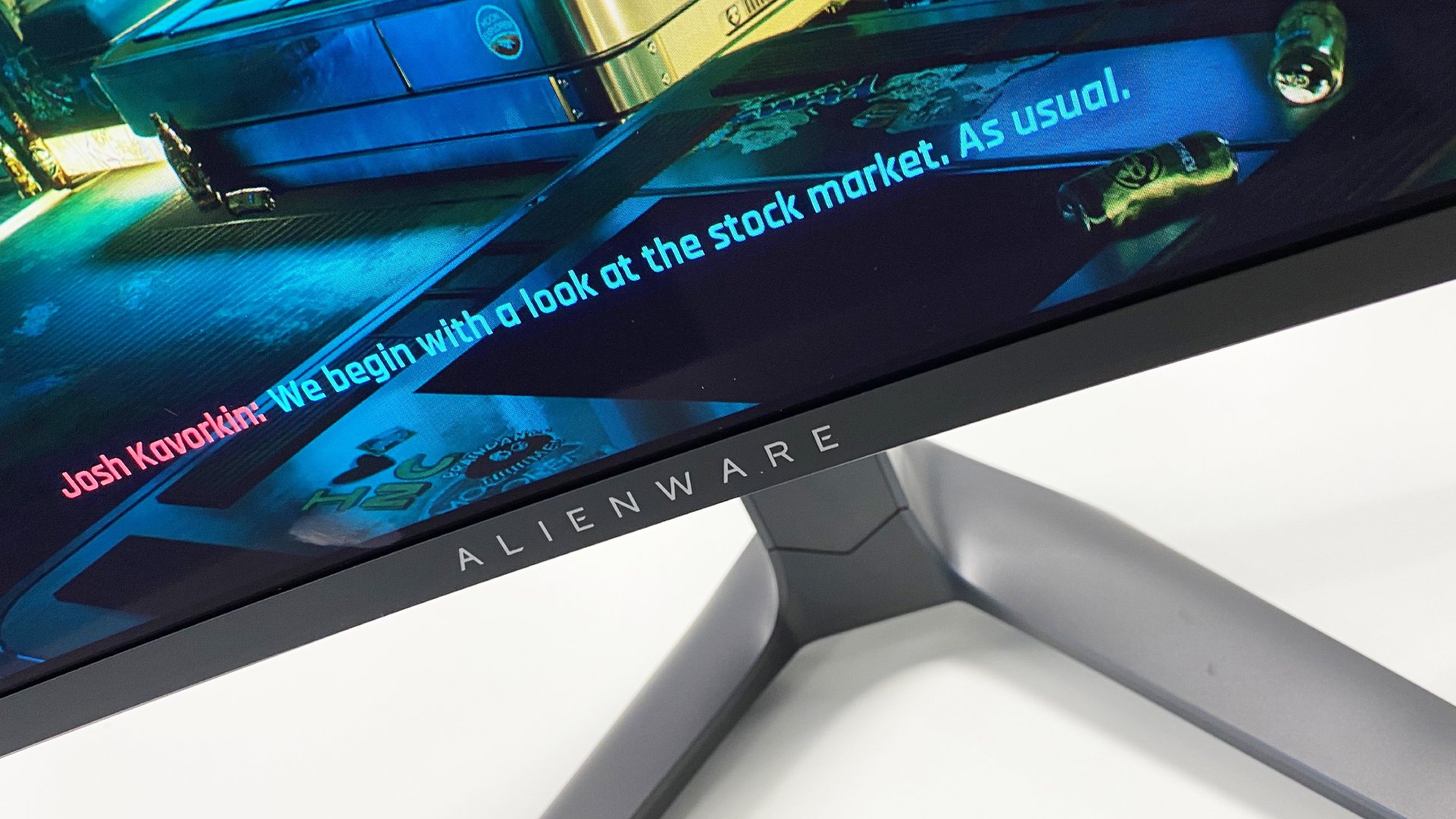
Another strong point, at least by OLED standards, is full-screen brightness. Firstly, this monitor looks fairly punchy regardless of how much of the screen is displaying bright objects. You definitely can't always say about all OLED screens.
OK, this Alienware's peak output does dim very slightly when, roughly, three-quarters or more of the panel is rendering something bright. But it's barely noticeable and nothing as bad as monitors with OLED panels from LG rather than Samsung, the former suffering from notably poor full-screen brightness.
What this Samsung-powered display doesn't do all that well, is general computing. Partly that's because, at this price point, you can have your pick of sizes, form factors, and resolution. A 34-inch panel with 3,440 by 1,440 pixels doesn't make for terribly good pixel density, unfortunately.
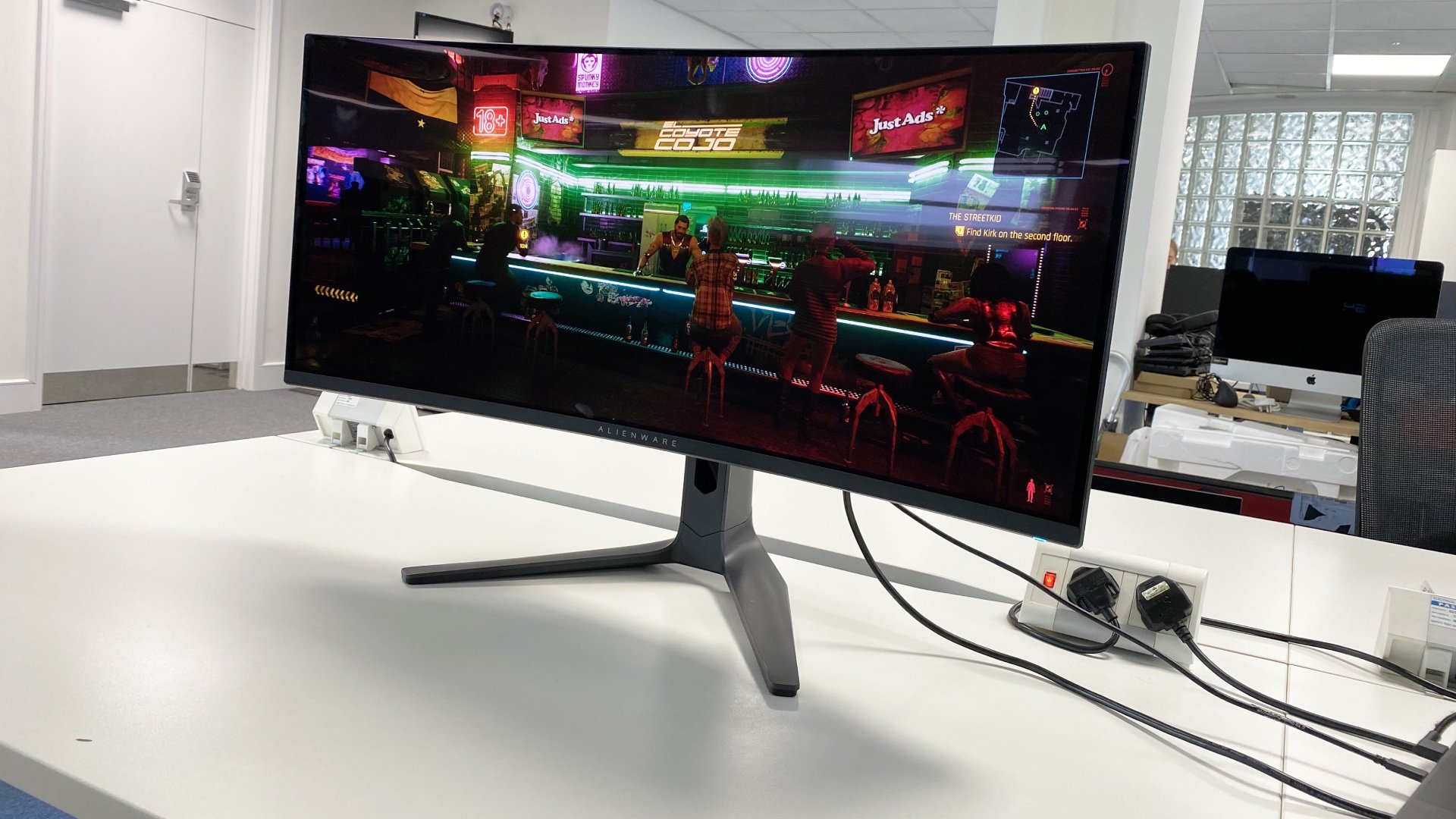
Making matters worse, Samsung's QD-OLED tech uses a triangular RGB subpixel rather than vertically striped RGB. That doesn't help with font rendering in Windows, which relies on a conventional subpixel structure for really nice, crisp text.
To be clear, fonts don't look terrible. They're just a little softer than you would expect. That's irrelevant to gaming, but it does compromise this display a touch as an all-rounder.
Oh, and if you are wondering about the age-old concern of burn-in on an OLED monitor, the truth is that these early OLED panels are too new for final conclusions to be drawn. There is some evidence that Samsung's QD-OLED panels may be more prone than the LG alternative. But it's not definitive. Either way, you do get a full three-year warranty from Alienware which covers burn-in. So that's reassuring.
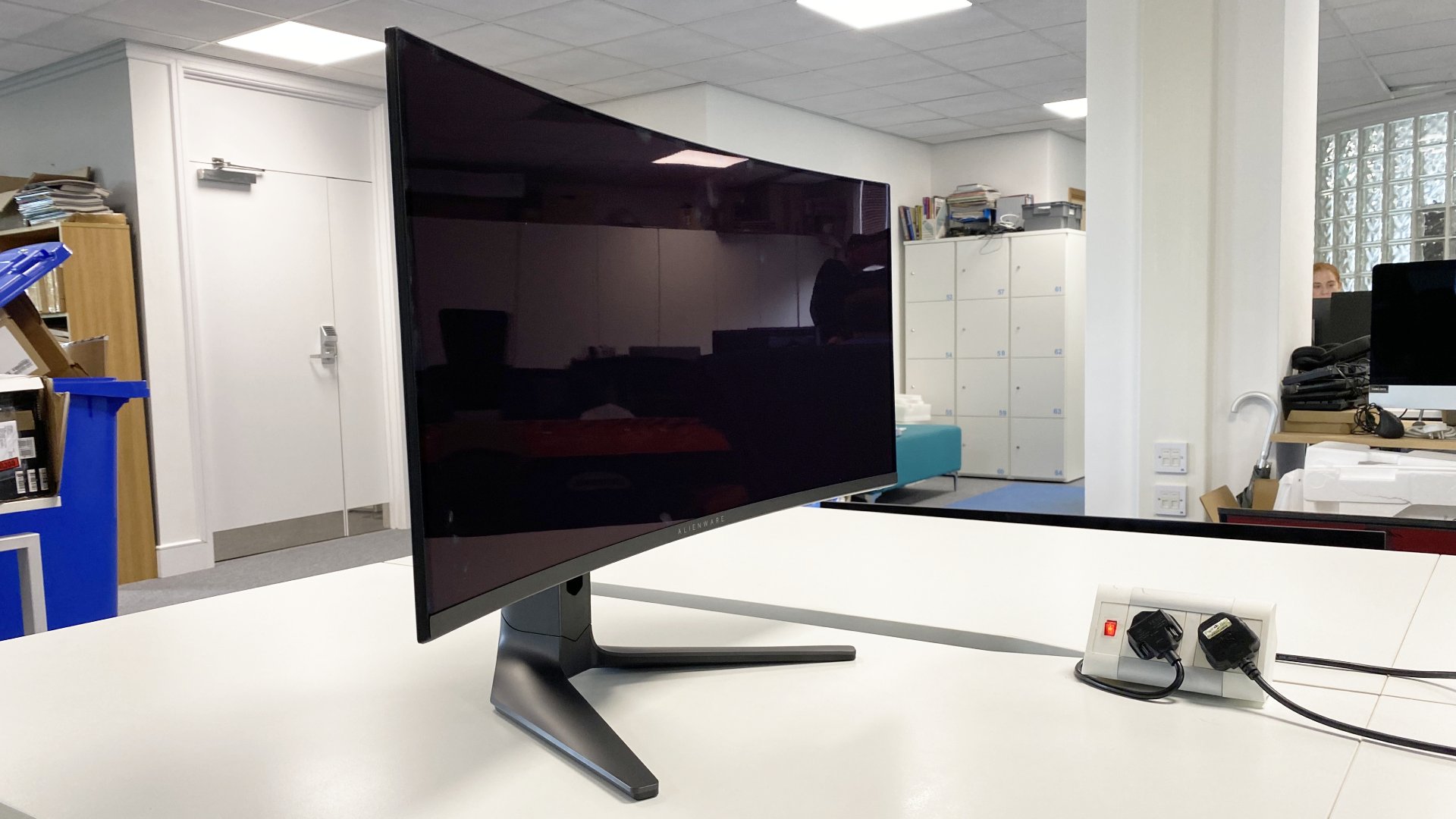
Should you buy the Alienware 34 AW3423DWF?
If there was one thing we wanted to change about the OG Alienware OLED monitor, it was that matte anti-glare coating. It prevented the OLED tech from really doing its thing.
Alienware has fixed that with this revised "F" model thanks to a glossy coating. The results are stunning. This is now exactly the kind of OLED experience we've been hoping for. The HDR visuals are fantastic and the speed is outrageous. For PC gaming, it's simply fabulous.
That's particularly impressive given you're actually paying less for this model thanks, in part, to the deletion of Nvidia G-Sync Ultimate support. We also prefer the Samsung QD-OLED panel tech to the alternative LG option. It's brighter and more consistent in a PC gaming context.
That said, this is still a very pricey panel and it does suffer some limitations. The aspect ratio and resolution aren't the best fit for console gaming. And the pixel density and subpixel structure slightly compromise the image quality for computing.
How we tested the Alienware 34 AW3423DWF
OLED monitors are still very new in a gaming monitor context and that makes for a novel set of foibles and testing challenges. For instance, full-screen brightness and brightness variability in response to the image being displayed need to be carefully observed, something that simply doesn't apply to a backlit LCD monitor. We also test for pixel response, latency, and color accuracy, along with assessing HDR performance, ergonomics, connectivity, OSD features, and more.
If you want to learn more about the ways we test the latest gaming monitors here at GamesRadar, take a look at our hardware policy.
Need more Alienware in your life? Take a look at the best Alienware gaming PCs, the best Alienware gaming laptop, and the best cheap Alienware laptop.







